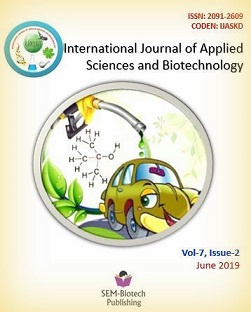Fodder Production and Livestock Rearing in Relation to Climate Change and Possible Adaptation Measures in Manaslu Conservation Area, Nepal
DOI:
https://doi.org/10.3126/ijasbt.v7i2.23973Keywords:
Fodder trees, climate change, indigenous knowledgeAbstract
A study was conducted to find out the production potential, nutrient composition, and the variability of the most commonly available fodder trees along with the varying altitude to help optimize the dry matter requirement during winter lean period. The study was carried out in Lho and Prok Village Development Committee of Manaslu Conservation Area (MCA), located in Gorkha district of Nepal.The study was conducted in two parts: social and biological. Accordingly, a households (HHs) survey was conducted to collect primary data from 70 HHs, focusing to the perception of respondents on impacts of climatic variability to the feeding management. The next part consisted of understanding yield potential and nutrient composition of the four most commonly available fodder trees (M. azedirach, M. alba, F. roxburghii, F. nemoralis), within two altitudes range: (1500-2000 masl and 2000-2500 masl) by using a RCB design in 2*4 factorial combination of treatments, each replicated four times. Fresh yield and dry matter yield of the each fodder trees was significant (P<0.01) between the altitude and within species. Fodder trees yield analysis revealed that the highest dry matter (DM) yield (28 kg/tree) was obtained for F. roxburghii but that remained statistically similar (P>0.05) to the other treatment. On the other hand, most of the parameters: ether extract (EE), acid detergent lignin (ADL), acid detergent fibre (ADF), cell wall digestibility (CWD), relative digestibility (RD), digestible nutrient (TDN), and Calcium (Ca) among the treatments were highly significant (P<0.01).
Int. J. Appl. Sci. Biotechnol. Vol 7(2): 227-235




